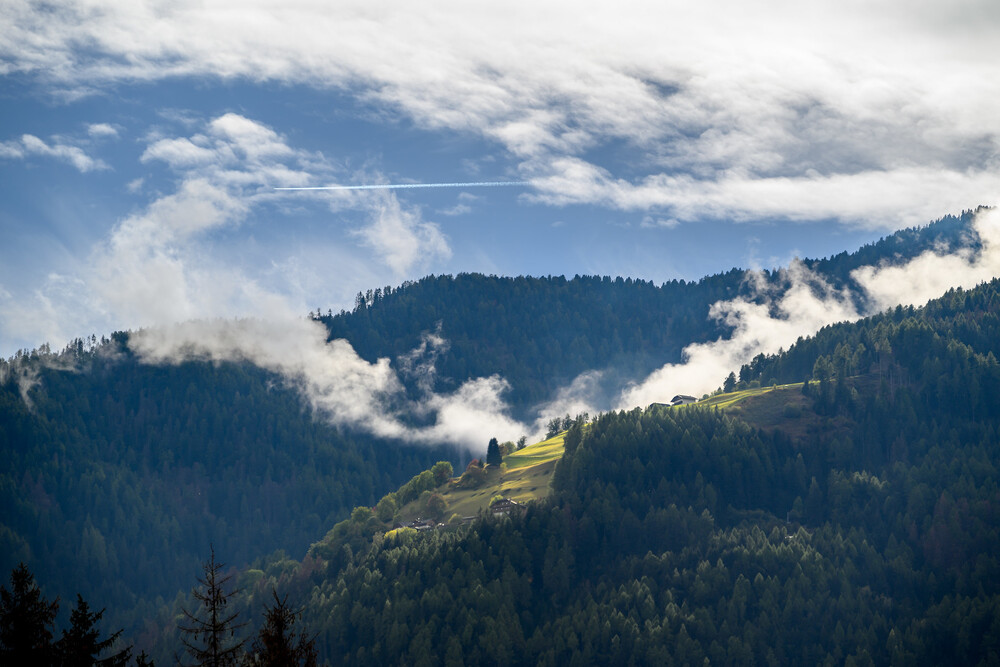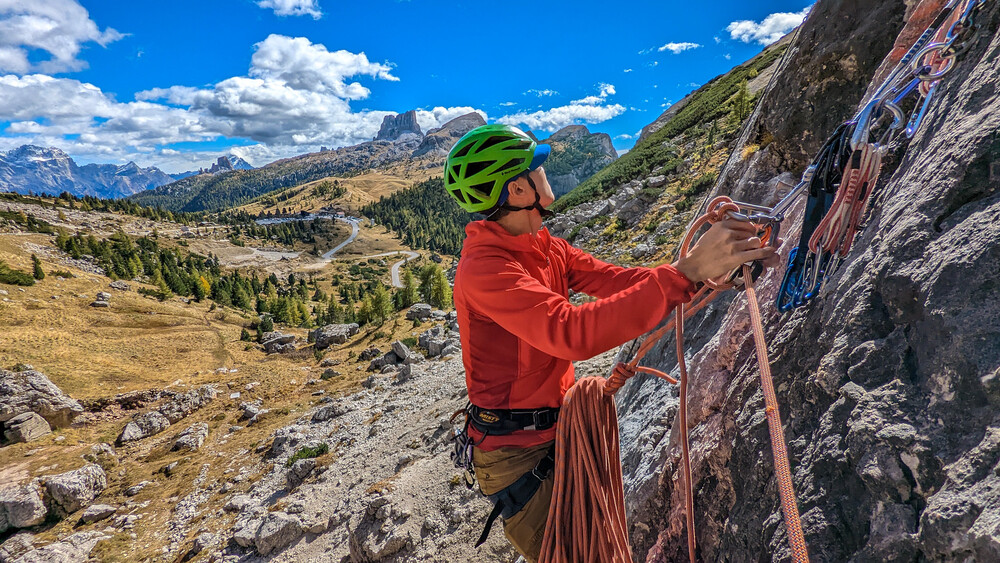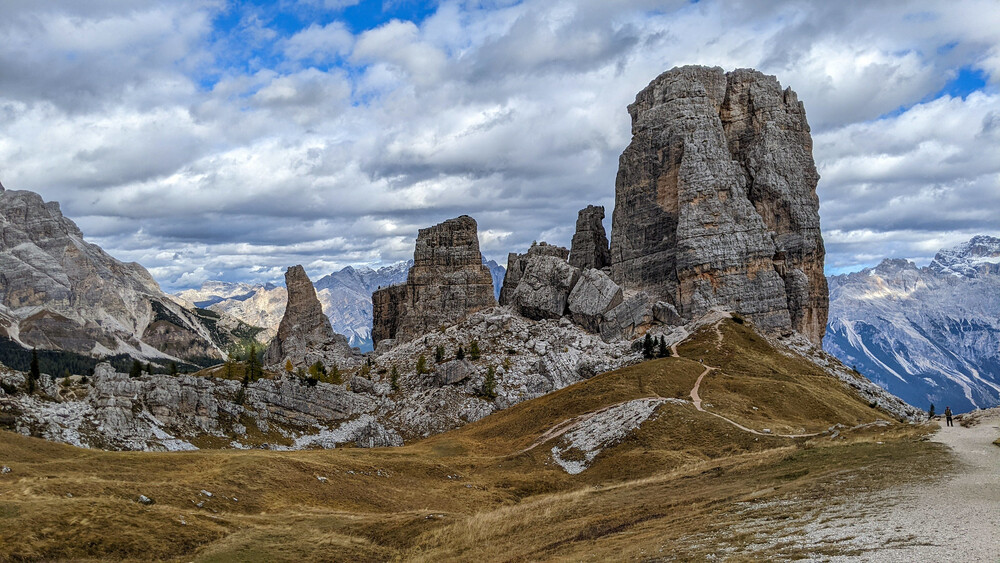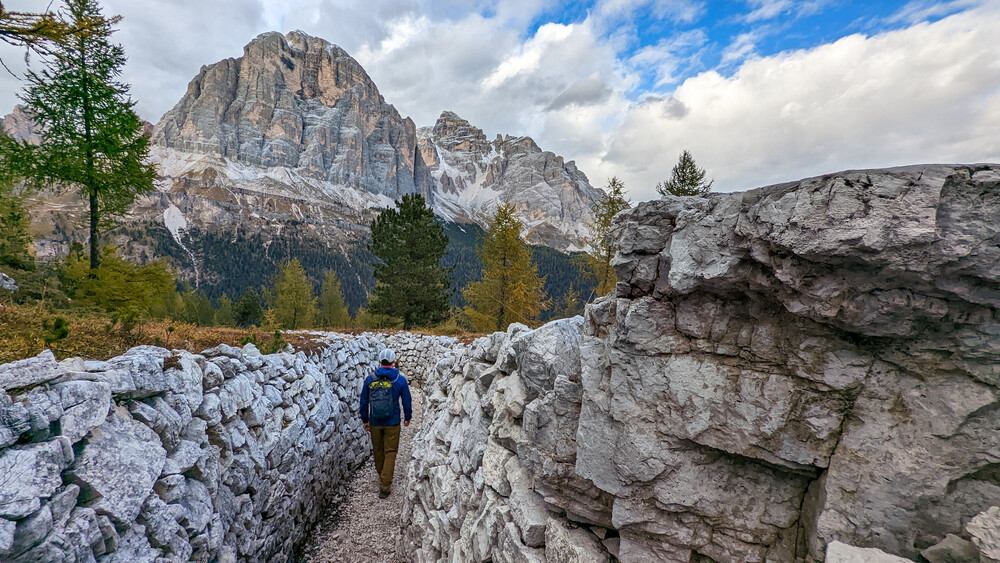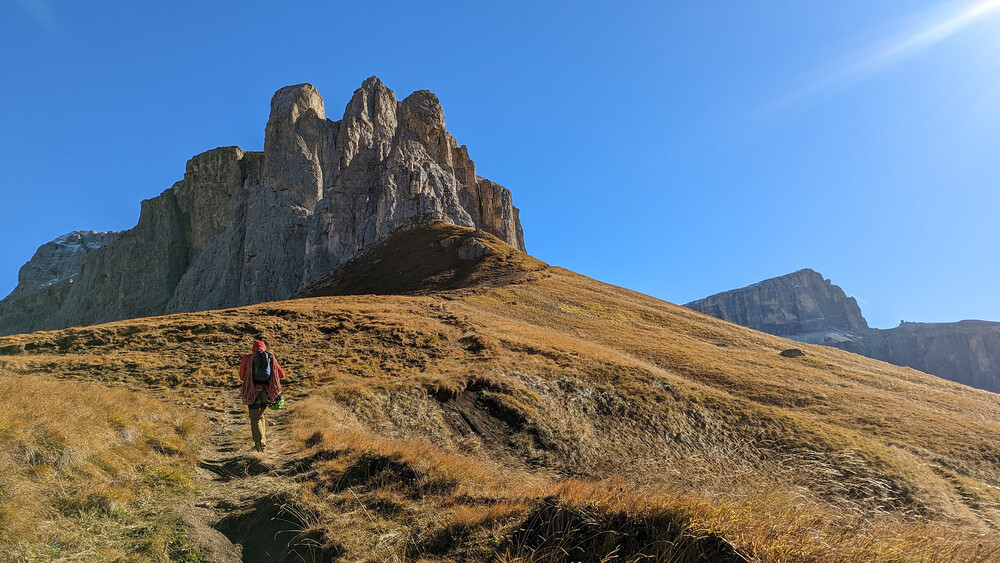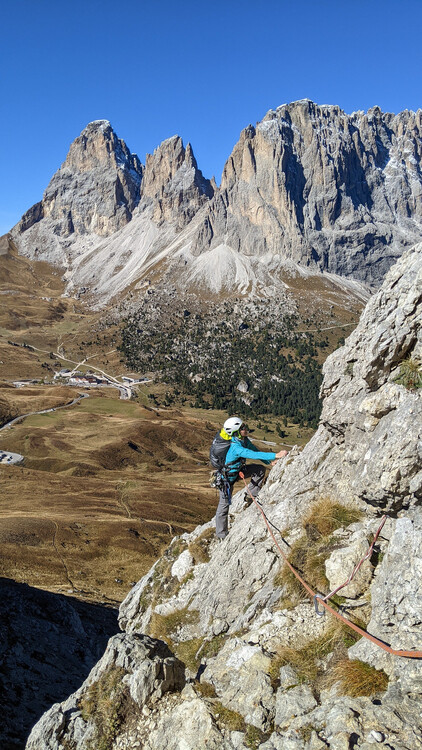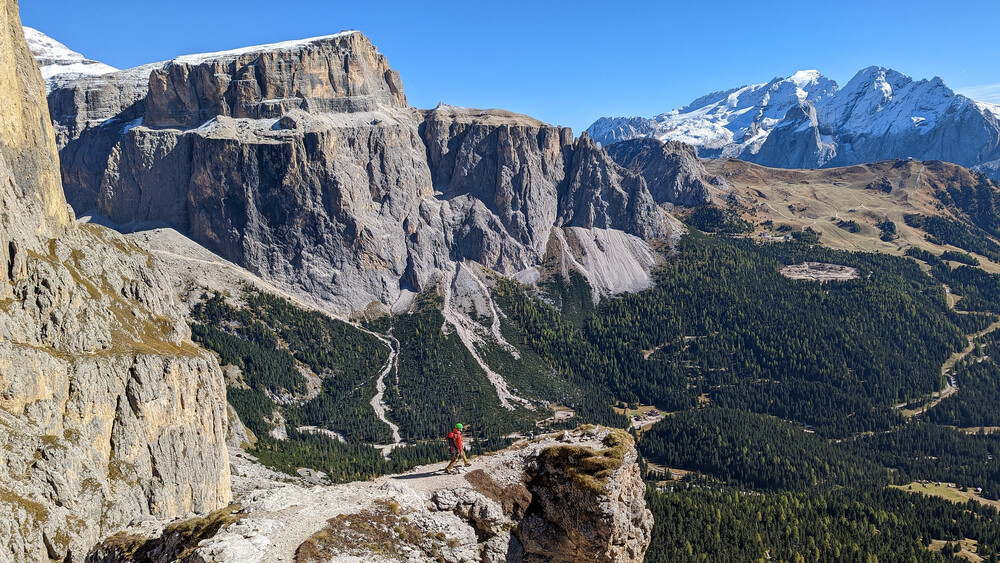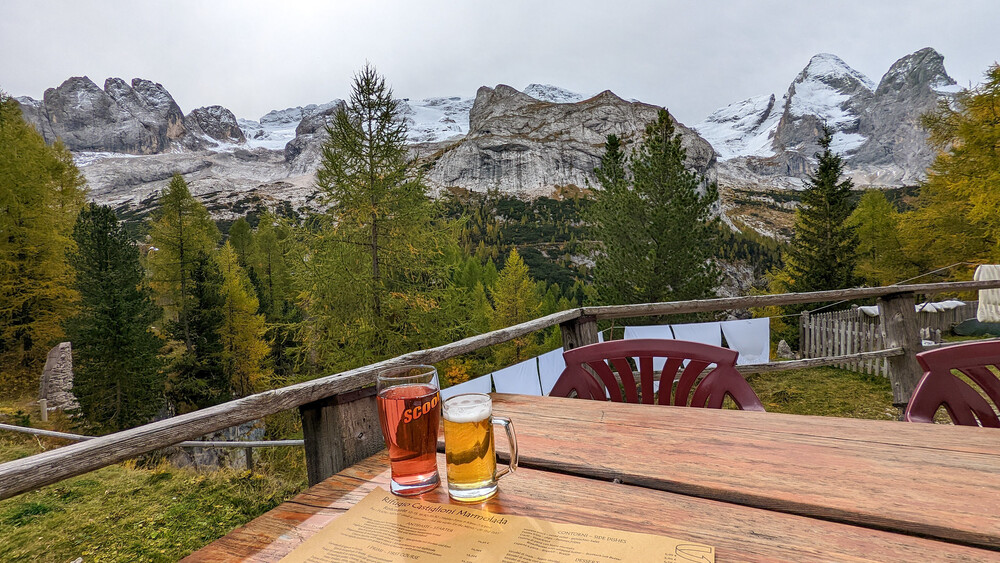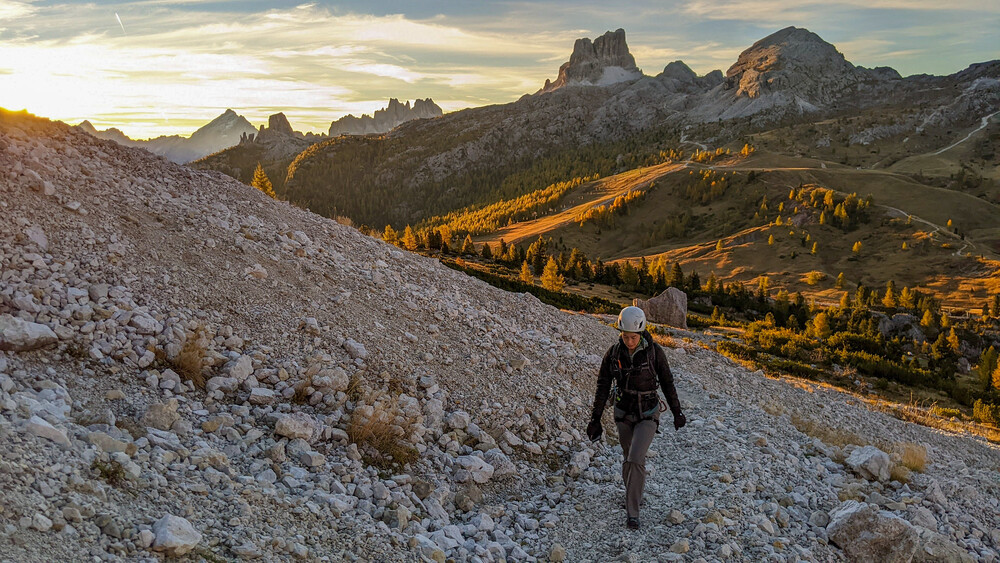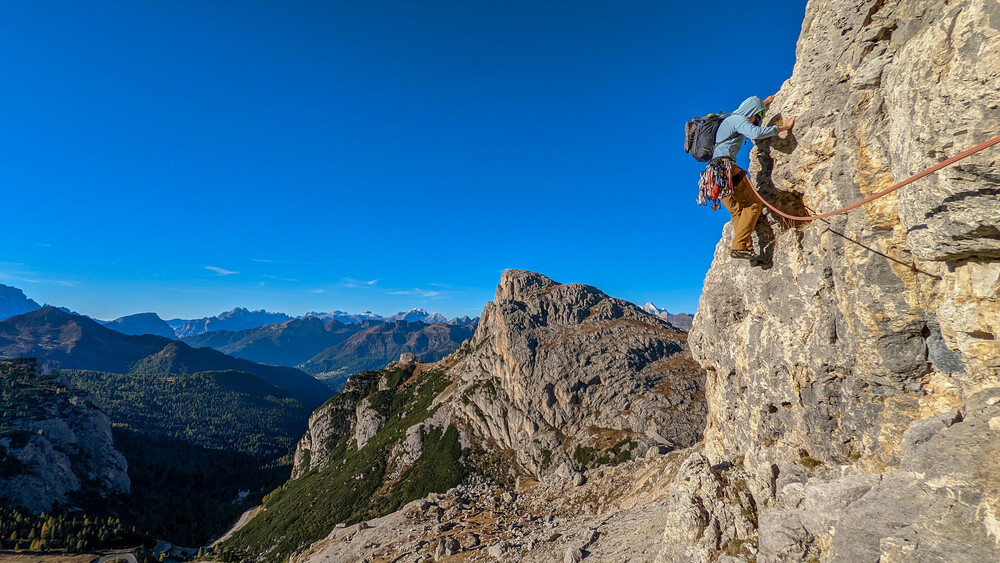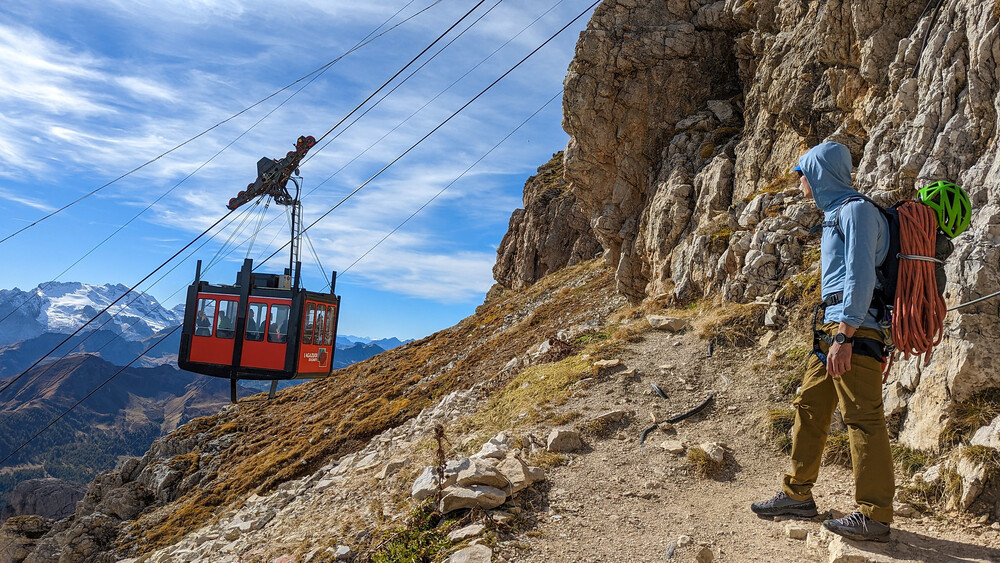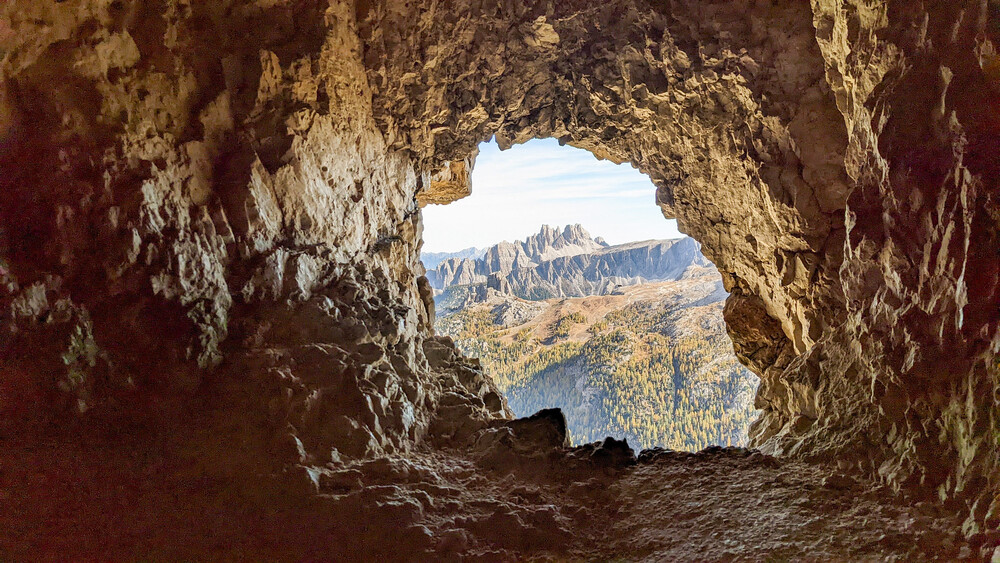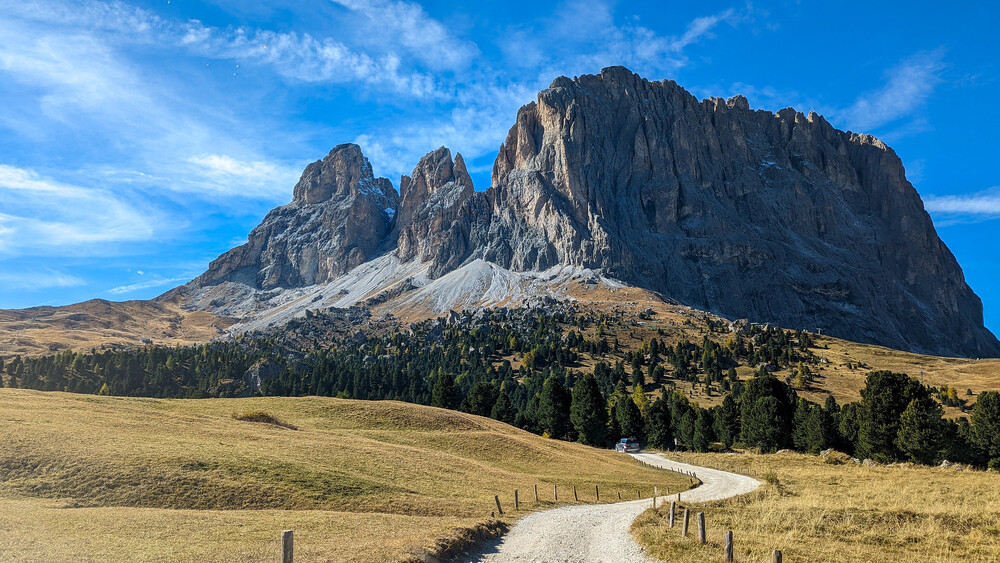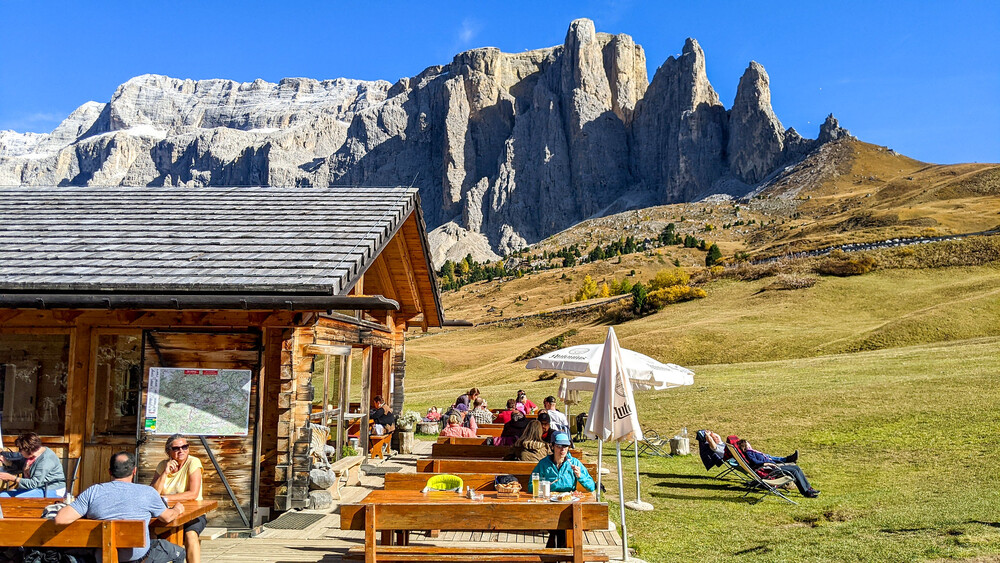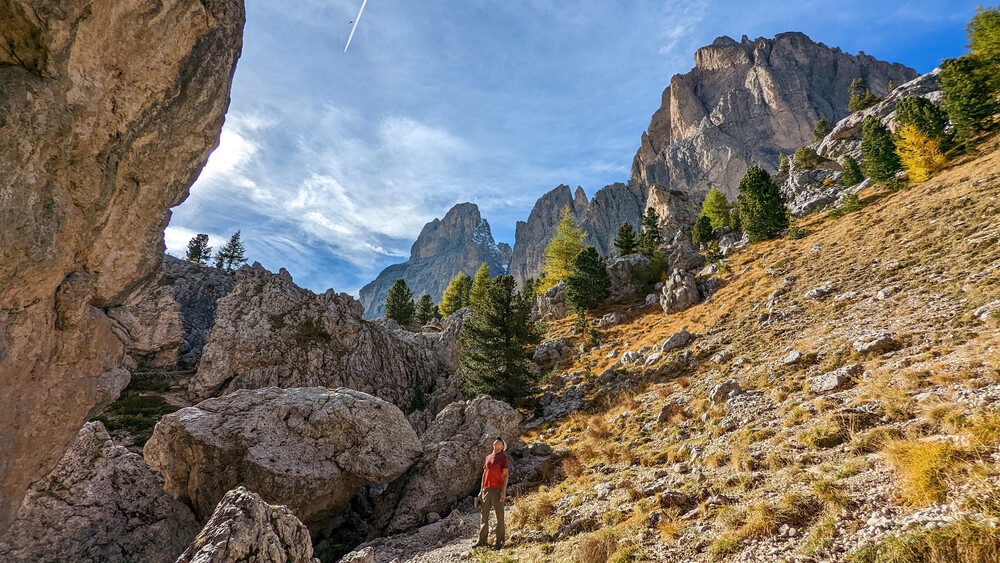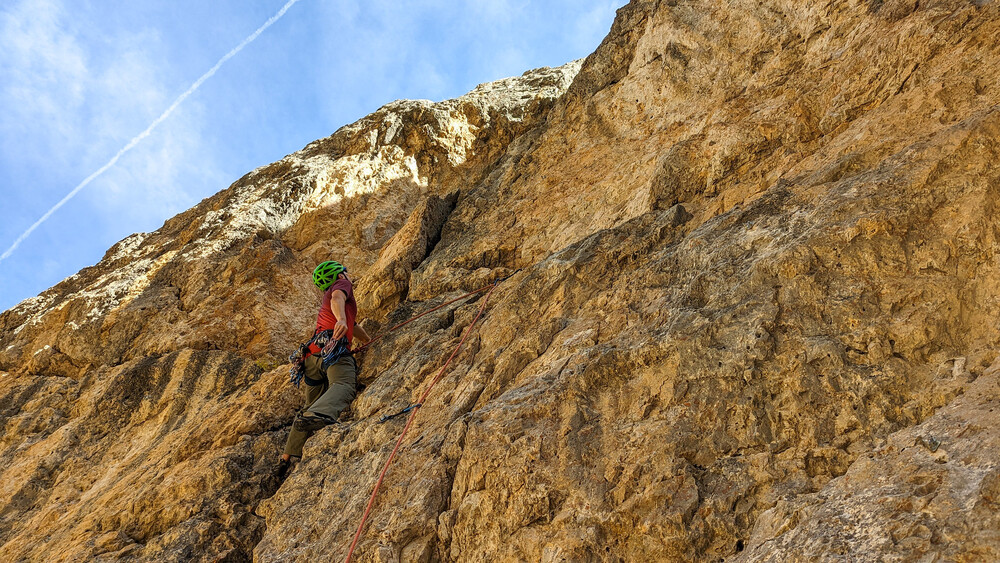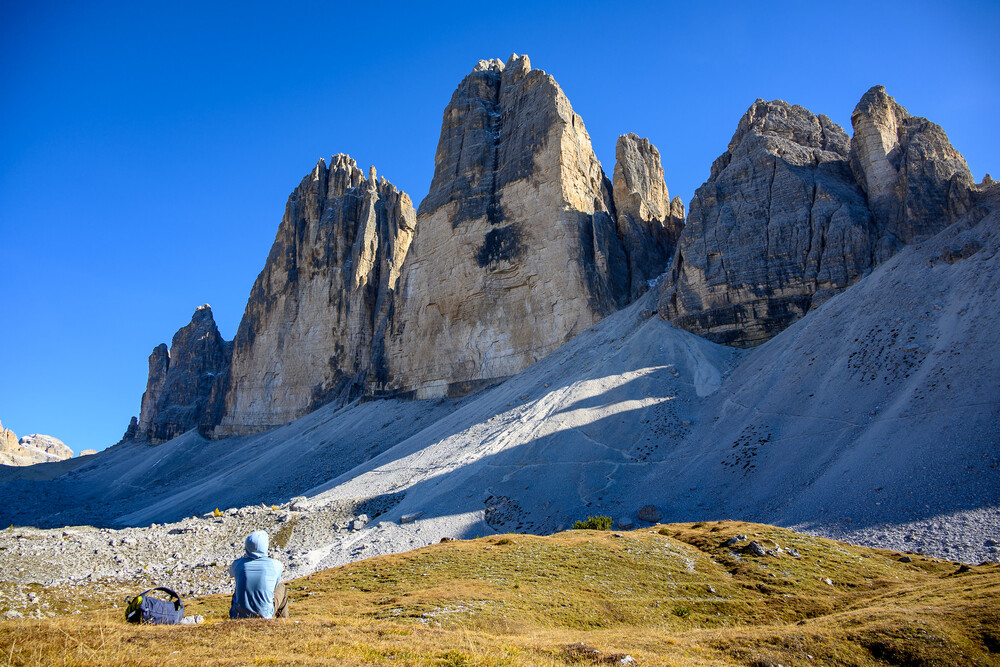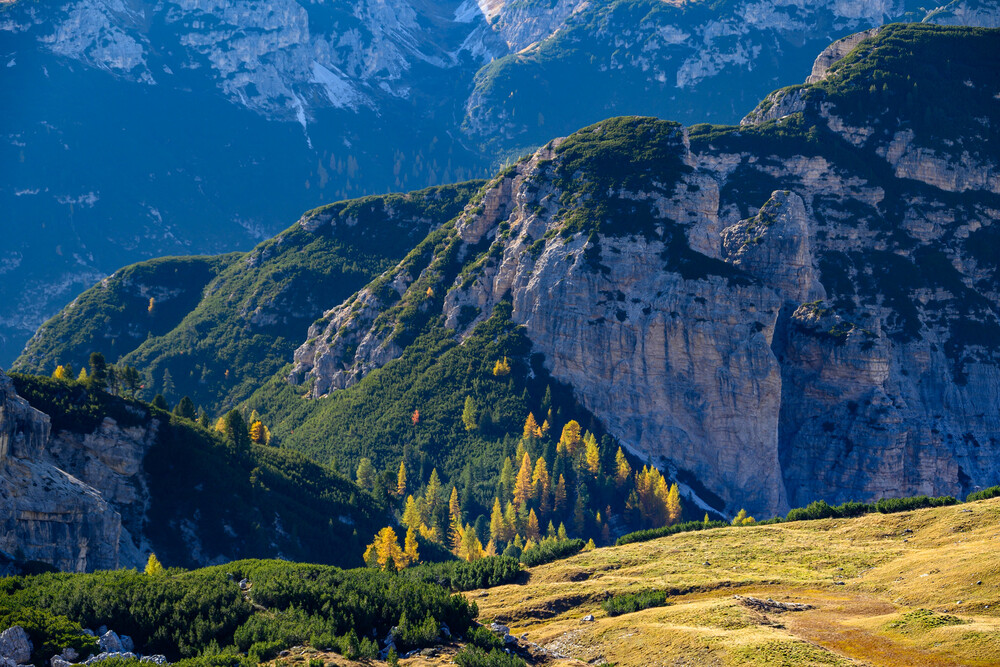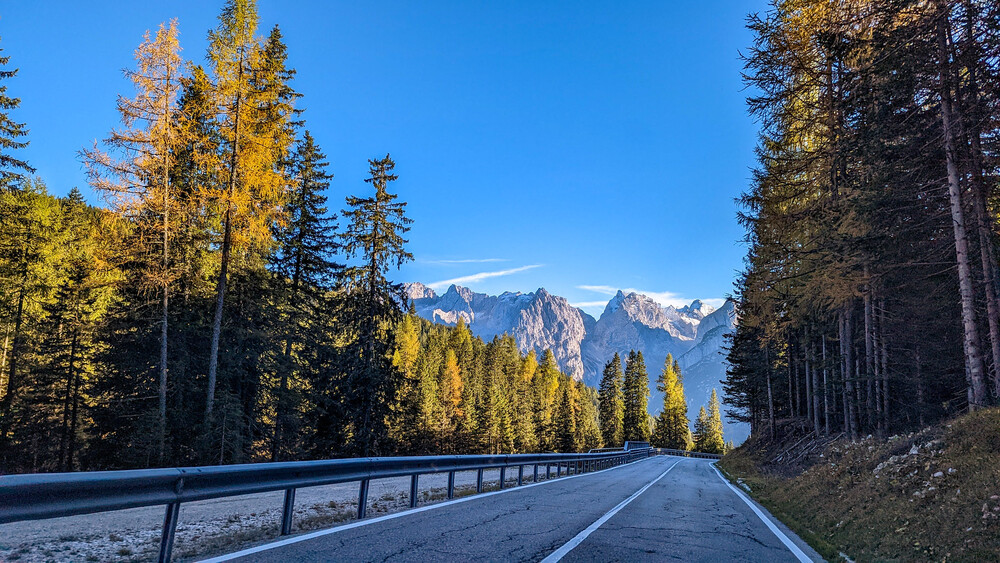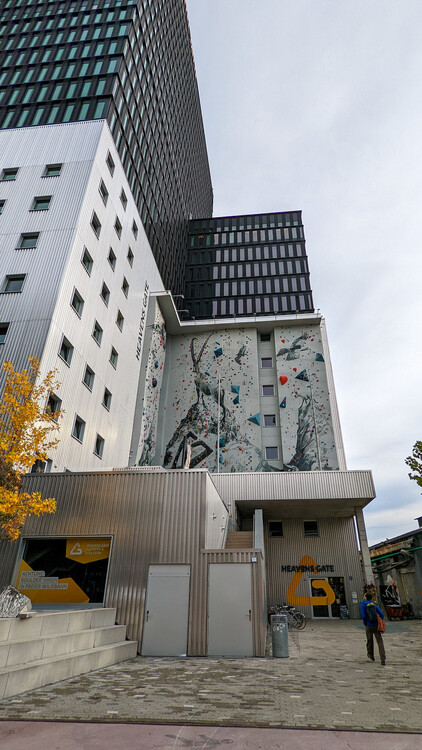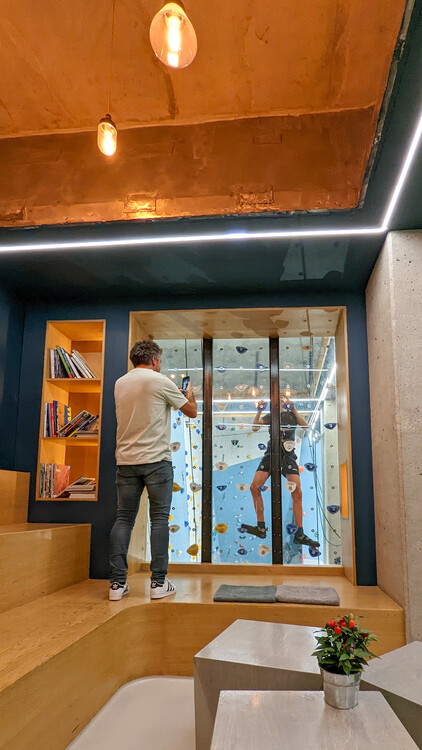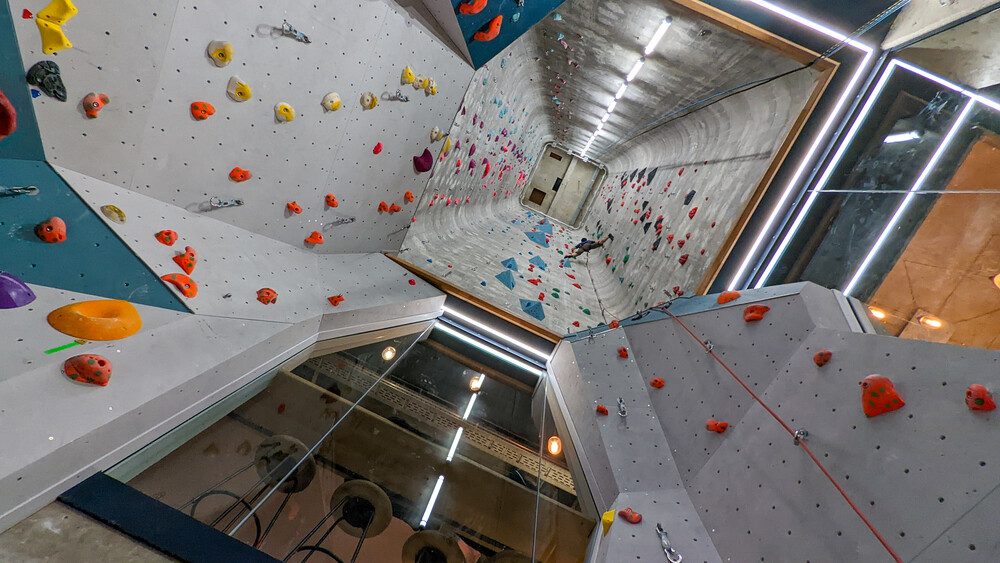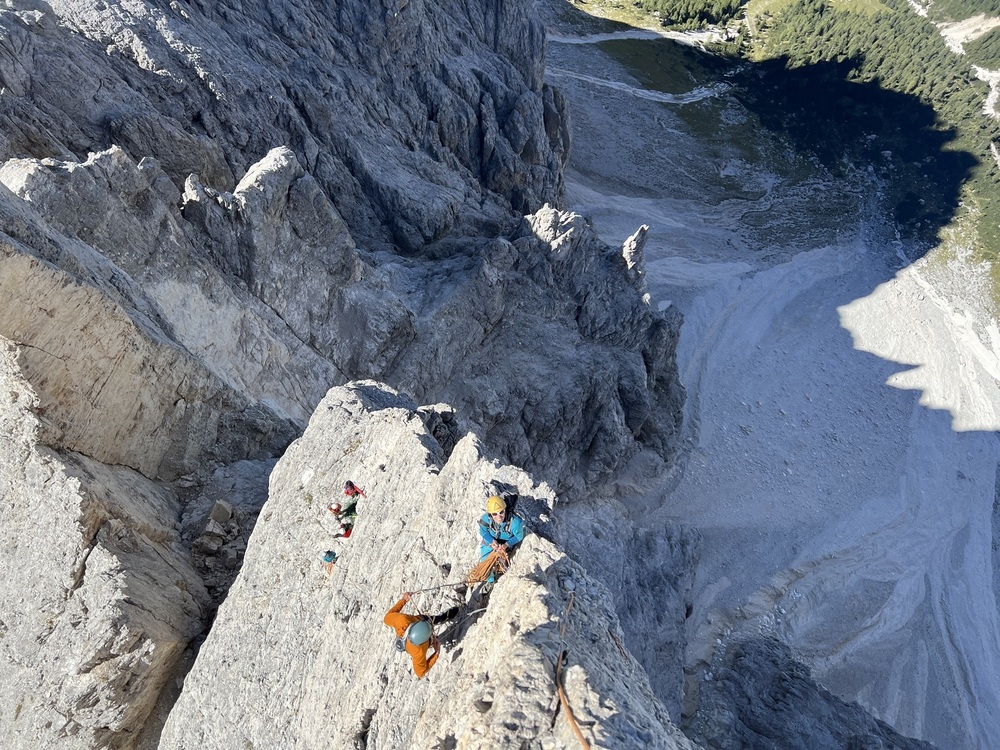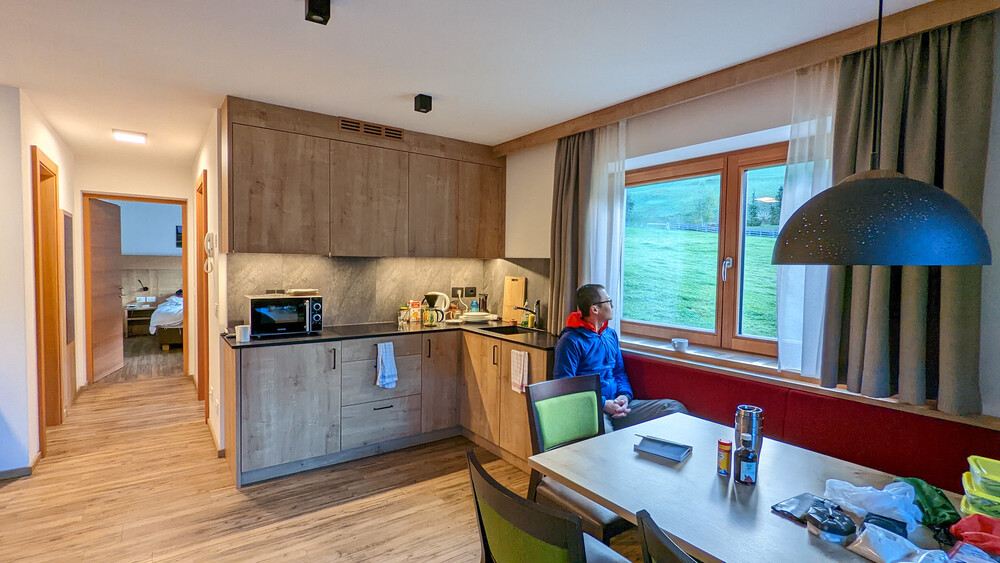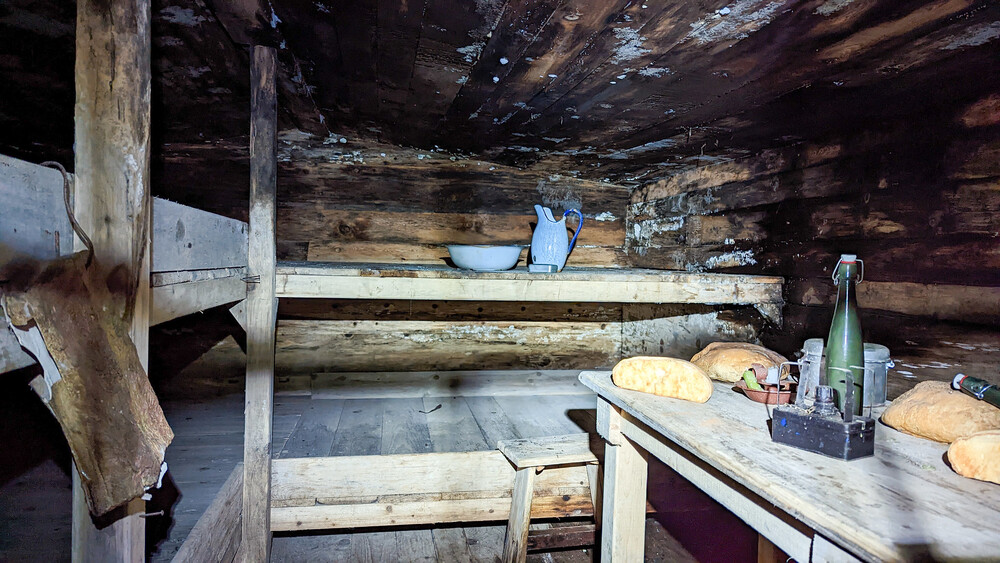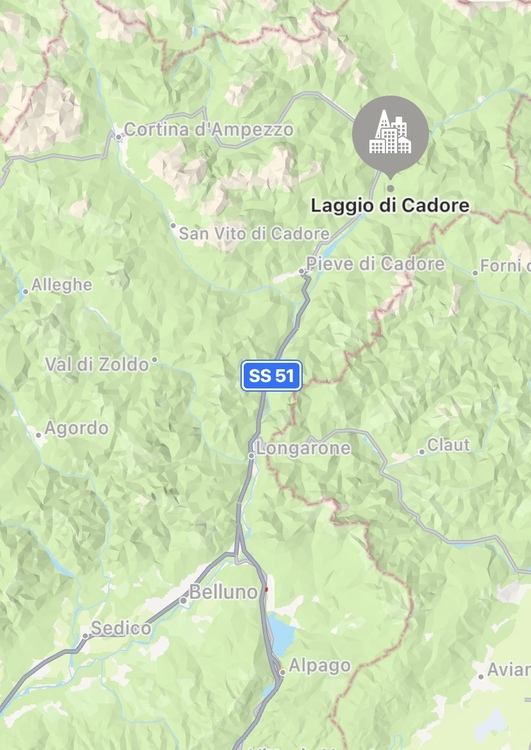Dolomites Fall 2022 Trip Report (Falzarego Pass & Sella Pass)
|
|
In early October 2022 my wife and I took a one week vacation to the Dolomites of northern Italy. It was our first time climbing in Europe and we had a great time, with perfect weather and delicious food. We spent two days each climbing around Sella Pass and Falzarego Pass, and hiked at Cinque Torri and Tre Cime di Lavaredo. At the end of the trip we visited a cool gym in Munich, where we flew in and out of. Credit to my better half for all the better photos below. Saturday: Munich, Germany to Badia, Italy We landed in Munich on Saturday morning and originally planned to spend a few days in Austria at the start of the trip. But a few days before the trip we decided to go directly to Italy because the weather forecast looked better. Driving south through Austria into Italy, the clouds cleared up and the sun shined through. Sunday: Falzarego Pass, Cinque Torri We spent Sunday morning near Falzarego Pass, at the base of the East face of Sass de Stria. Sheltered from the wind and warmed by the sun, we enjoyed the vacation grades and friendly bolting with only two other parties present. In the afternoon we took the lift up to Cinque Torri, on the final day of the season that the lift was running. A stiff wind, dark clouds, and a few droplets of rain helped to ease my disappointment at not having time on this visit to climb at this iconic spot. We hiked back down through a maze of World War I era trenches. Tofana di Rozes towered in the distance. Monday: Sella Pass, First Sella Tower On Monday we climbed Via Steger (~5.7, 600') on the First Sella Tower, the first of two moderate, multi-pitch routes for us on the trip. The approach was straightforward and short. The start of the chimney (4th?) pitch was polished and difficult. The penultimate (6th?) crux pitch featured amazing exposure traversing right around a golden arete on small positive holds. Sassolungo remained a constant in the distance to the west. Below us cars on the winding road resembled a line of crawling ants. The descent from the First Sella Tower was beautiful, but difficult to find (we got it on the third try), and involved a lot of steep down climbing. Tuesday: Rest Day We rested on Tuesday by taking an all-day driving tour of the western Dolomites. Our lunch table outside Rifugio Castiglioni Marmolada offered an expansive view of the north face of the Marmolada, site of a deadly glacier collapse during the heatwave of 2022. Wednesday: Falzarego Pass, Lagazuoi Piccolo Our second and longer multi-pitch route of the trip was Via del Buco (Bassa variant, ~5.7, 750') on the south face of Lagazuoi Piccolo, directly overlooking Falzarego Pass. The climbing was easy but runout in some places. Route finding was tricky. After roughly 10 pitches, we packed up our rope and gear and hiked to the summit on the Kaiserjäger path. Our descent started under the summit cable car station and reversed the Galleria Via Ferrata. During WWI, the "Alpini" troops of the Italian army used explosives to create a system of tunnels in an effort to overtake the Kaiserjäger troops of Austria-Hungary who controlled Lagazuoi. Inside the tunnel system it was pleasantly cool. As we descended, window holes in the mountain side periodically appeared offering a view outside. In between them, it was pitch black in many stretches of the tunnel and our headlamps were very useful. Thursday: Sella Pass, Cittai dei Sassi On Thursday we returned to Sella Pass to do some sport climbing at Città dei Sassi. City of Rocks is a large boulder field beneath the southeastern flanks of the imposing Sassolungo. We started at Sector 9, on a southeast facing wall right next to the main trail. The two routes we tried were short and much harder than their 4b-4c grades suggested. We moved a short distance away from the main trail to Sector 10 (Sasso Gabriel) and climbed one more route that actually felt as easy as the 4a graded indicated. Then we took a late lunch break at the nearby Rifugio Malga Sella Alm, sandwiched between Sassolungo to the northwest and the Sella Towers to the east. We had sparkling water with elderberry syrup, a small radler, fresh buttermilk, a plate of speck and cheese with pickles and bread, and an apple strudel with ice cream. After lunch we returned to Sector 10 at Città dei Sassi and climbed three taller routes on the northwest wall. Each one was challenging enough to be engaging but still easy enough to be fun. Friday: Tre Cime de Lavaredo In the morning we headed east, past Falzarego Pass. At a pit stop on the side of the road, we saw a fox bouncing across a meadow at the base of the Tofana di Rozes. Continuing east, we passed Cortina d'Ampezzo and Misurina, and around noon arrived at Rifugio Auronzo, at the base of the famous Tre Cime de Lavaredo. It was sunny and hot with no clouds in the sky, and we saw many people on the earlier sections of the hike below the south faces of the three peaks. Going counter-clockwise, the crowds thinned out after we passed Forcella Lavaredo and continued north, and the impressive and sheer north faces of Tre Cime came into view. The trail led us to an overlook below Rifugio Locatelli (closed), dropped down into a basin, and then climbed up steeply to an alpine meadow. The ever-changing perspectives of Tre Cime never got old. Saturday-Sunday: Munich We drove back to Munich on Saturday morning and spent the weekend there before flying back home. On Sunday morning we visited Heavens Gate, a climbing gym with a unique interior of tall silos (repurposed from storage for potato flour) and an outdoor wall on the exterior of the building. The route setting was pretty good, and the interior walls in the silos were 28 meters tall. |
|
|
Great trip and time of the year to go. Think about late spring where you can ski to South side rock lines and then ski back down to dinner. |
|
|
Excellent write up and beautiful pictures. You did two of the best moderate Dolomite routes in two of the coolest areas. Happy to see and read your trip report. I‘ll bet you go back again, and again. |
|
|
for the next visit i would recommend the delagokante on the vajolet towers in the rosengarten, the 2nd pitch is a bit polished but absolutely amazing! |
|
|
Thanks for posting! Was there any guidebook you found particularly helpful? Or any places you stayed that you’d recommend? I’m taking a similar trip early summer! |
|
|
Emma B wrote: we stayed in san cipriano on the sw side of the rosengarten. not necessarily the closest to the vajolet approach (out of val di fassa next door to the east), but a cool little place (with a small local crag and a bunch of fairly accessible crags around bozen). things to consider for early summer are potential heat down low (bozen) and snow up high (dolomites). a deciding factor for me was being in a german speaking area vs. an italian one. there are a multitude of climbing guides available - the two we used most: Sportklettern in Suedtirol by the AVS - best for crags Mehrseillaengen Dolomiten by vertical life is decent for multipitch climbing in the dolomites in general, not necessarily the rosengarten some of the guides are available in italian, german, or english. if you make it to arco (recommended before or after it's too hot and only if you don't mind some air pollution) there is a cool little bookstore that has pretty much everything. in terms of dolomites think of it as a multitude of small mountain ranges clustered together, rather than one continuous range. each cluster has certain characteristics and some are more climbable than others. chose wisely in terms of location so that you have lots of options available close by for whatever you like to do. we actually got shut down by snow in the rosengarten a couple of days after climbing the delagokante, but were able to climb the porphyr (imho really nice rock) crags around bozen. |
|
|
Stunning photos, thank you! |
|
|
Thanks for the tr, Fan. Oh how I miss the Dolomites. Hoping to get back there in September. |
|
|
Emma B wrote: James Rushforth's guidebook, "The Dolomites : Rock Climbs and Via Ferrata," published by ROCKFAX (2019 ed.) was indispensible for us in planning this trip, from what areas to focus on, where to stay to be closest to multiple crags, which areas have the most number of easy routes by sport/trad. We bought our copy of the book in person at Rock and Snow in New Paltz, NY, which you probably already know has a huge inventory of climbing guidebooks for international locations. You may read/hear about inaccuracies in this book, and we did find a few mislabeled route names and R-for-L or L-for-R mistakes in some descriptions. But for me those small errors were easily overcome by common sense and were outweighed by the comprehensive coverage of the book and the nice layout, index, color photos, etc. If you read Italian or German, you likely have other good guidebook options.
I completely agree with the advice above from old5ten, who, along with several others on MP, have way more experience than me with climbing in Europe. But to actually figure out which location to stay at so that we had many crags within a short drive, that's where the ROCKFAX guidebook by Rushforth was so useful. Based on the guidebook, it appeared that Falzarego Pass and Sella Pass, broadly defined, were two areas that contained many easy multi-pitch climbs, which is what we were interested in the most. MP currently lists a few dozen in each area, but the guidebook includes several hundreds quality lines, and surely there are thousands if not tens of thousands of lines in total across all grades, lengths, and quality spread throughout. Our home base was an apartment rental on the outskirts of Badia, a comune in South Tyrol of a few thousand people, less than 30 minutes away from Falzarego Pass and 45 minutes from Sella Pass. We picked early October to avoid the summer hiking season and winter ski season. We may have been the only guests during our entire stay in our building, which had at least 4-5 other rooms for rent. (Booking.com has better inventory than AirBnb in Europe.) We specifically avoided Cortina d'Ampezzo because we wanted to find some place quieter and less touristy. In addition to the two areas near Sella Pass we visited on our trip, you may also wish to consider Piz Ciavazes for longer multi-pitch (with long descents). The Val Gardena area has many good crags too. Both are within 45 minutes of Badia. Depending on how early you mean by "early summer," Emma, you may want to focus more on a home base at lower elevations or south-facing walls for good climbing conditions. YouTube videos are another great way to get a feel for potential locations you're considering. There are some good short amateur clips on specific objectives, but I recommend Rosso 70, a 78-minute documentary film that honors the history and legacy of climbers from the Cortina region. I thought it was a beautifully made film. Thanks everyone for the kind words! They mean a lot. RKM, you're right! We hope to be back and back again to this region to sample the many life times' worth of climbing. phylp phylp, I hope you make it back there this year! Emma, best of luck planning your trip! |
|
|
Fan, this is my ancestral village on my father’s side, not too far from Cortina. I still have cousins in the area that we like to visit. We know we are flying into Milan on our next trip but if the weather is good we may head into the Swiss Alps. But we follow the weather so we may get to the Dolomites. I’ll post a TR! |
|
|
Fan - not sure how I missed this TR! Thank you as always for sharing the amazing photos and psych - looks like a perfect trip! |
|
|
Thanks, Ben! |
|
|
What a wonderful trip. Thanks for sharing. My wife and I spent part of our honeymoon in the Dolomites, basing ourselves in Corvara, near Val Gardena. We didn’t have any gear but did a couple of easy via ferrata and enjoyed the scenery, food and Alto Adige wines. I would love to go back with a rope and rack. old5ten mentioned Arco, which is terrific as well. I spent a productive two weeks there many years ago getting really strong climbing with the locals at crags like Massone, etc. A terrific place to climb, bike and swim or have down time in Lago di Garda. One small crag, Spiaggia delle Lucertole, rises right out of the lake and you belay from metal rods a few feet above the water. Just a really nice place. |

 Continue with onX Maps
Continue with onX Maps Sign in with Facebook
Sign in with Facebook


















